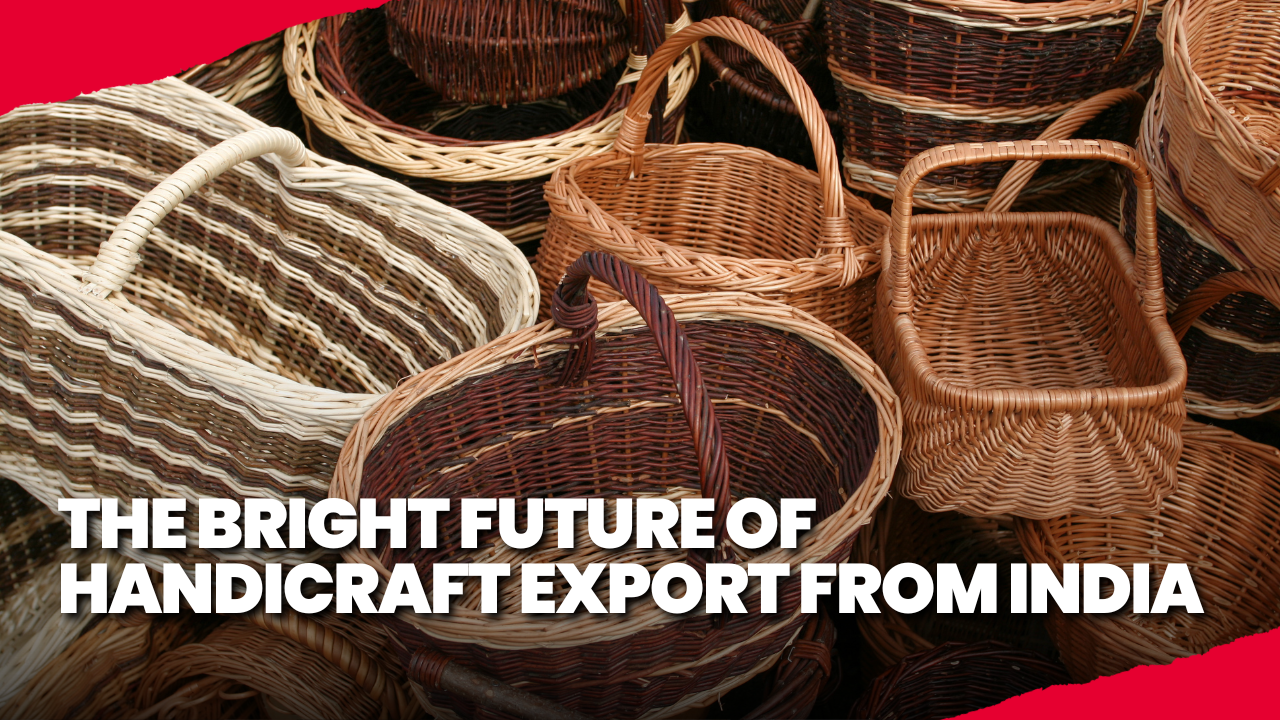
A big part of India’s cultural heritage for a long time has been handicrafts, which show off the country’s rich customs, art, and craftsmanship. In the next few years, handicraft export from India have an incredible opportunity to grow. This is because of things like rising demand around the world, a move toward sustainability, and the spread of e-commerce platforms. Let’s talk about the future of this successful industry, its main markets, and the chances for artists and exporters as we look ahead to 2024 and onward.
How Indian handicrafts are exporting right now
India makes a lot of crafts, more than any other emerging country. It is one of the biggest makers of crafts in the world. There are over 7 million artisans in India, and many of them are women. The handicraft industry is the second biggest employer in the country after agricultural land. Indian handicrafts are going to grow even more because there are now about 70,000 selling houses working to grow them.
Recent data shows that handicraft export from India were worth ₹118 billion in 2018, and they will be worth ₹128 billion in 2019.
The Federation of Indian Export Organizations (FIEO) said that in 2017-18, handicraft exports rose at a rate of 8.4% per year and reached ₹34,122 crores. Even though these numbers look good, handicrafts only make up 2.36 % of India’s total export earnings. This indicates that there is a lot of opportunity for growth.
Top international demand areas
There is a huge market for Indian arts, and some types are particularly popular with people from other countries. Notably, handicraft buyers in USA show strong interest in the following products.
Indian Home decor
Indian items for home decor are very popular. These can be anything from intricately designed wall hangings to hand-carved wooden furniture.
Handmade textiles
Because they are unique, sarees, scarves, and other handmade fabrics are becoming more and more popular.
Jewelry
People from other countries also like to buy precious gems and imitation jewelry made in India.
Ceramics and pottery
These items show off the traditional art and skill of Indian craftspeople.
Certain types of handicrafts are famous in places as below, which make goods that appeal to people all over the world.
- Saharanpur
- Gujarat
- Rajasthan
- Kashmir
Also Read This: Two-step to Market Your Import Export Business
Handicraft export trends for the future
Indian handicrafts exports look like they will do very well in the future because of a few trends that are expected to change the market:
1. The goal of sustainability
Sustainability is quickly becoming an important factor in what people around the world want. As more people look for eco-friendly and long-lasting goods, the handicrafts industry is ready to take advantage of this trend. Artisans use natural materials and reduce waste.
This transition benefits the environment and makes items more appealing to aware consumers.
2. Growth of e-commerce
As the digital revolution has changed retail, artisans may easily reach worldwide markets. E-commerce sites let artists show off their goods to people all over the world. This makes direct sales easier and cuts down on the need for middlemen. This change will improve Indian handicraft exports and visibility.
3. Technological Integration
Technology in handicrafts opens up interesting new innovation options. Artisans may build detailed patterns and improve their creativity with 3D printing and digital design tools. Technology improves inventory management, market access, and client involvement, helping craftsmen meet consumer needs.
Government programs that help export handicrafts
The Indian government has taken a number of steps to help and promote the handicraft industry. The National Handicraft Development Programme (NHDP) and the Preferential Market Access Scheme (PMA) are two programs that help Indian artists get their goods into more markets and give them money.
These efforts are very important for promoting growth and making sure that artists get fair pay and good working conditions. Many of them are women who are having a hard time getting jobs because of gender bias.
Wrapping It Up
Due to expanding international demand, sustainability, and e-commerce, the future of handicraft export from India is bright. Indian artists and exporters can make the most of the handicraft industry by following these trends and getting help from the government.
An expected CAGR of 10.08 % from 2023 to 2030 means that the world handicrafts market will grow a lot. By focusing on distinctive, high-quality items and using current technologies, artisans can maintain traditional crafts and grow in a competitive market.
The continued resurgence of traditional handicrafts and the integration of modern processes will guarantee Indian artisans’ international importance in the handicraft industry.
FAQs
Handmade textiles, home decor items, jewelry, ceramics, and wooden crafts are some of the most famous items that India exports.
The Indian government helps handicraft exporters in many ways, such as through the National Handmade Development Program (NHDP), which aims to improve market access, offer financial help, and support eco-friendly methods.
Sustainability, e-commerce, and technology are impacting handicraft exports. These trends are giving artists new opportunities and making it simple for them to sell their goods around everywhere.
Also Checkout Our YouTube Channel: @limeinstituteofexportimport






